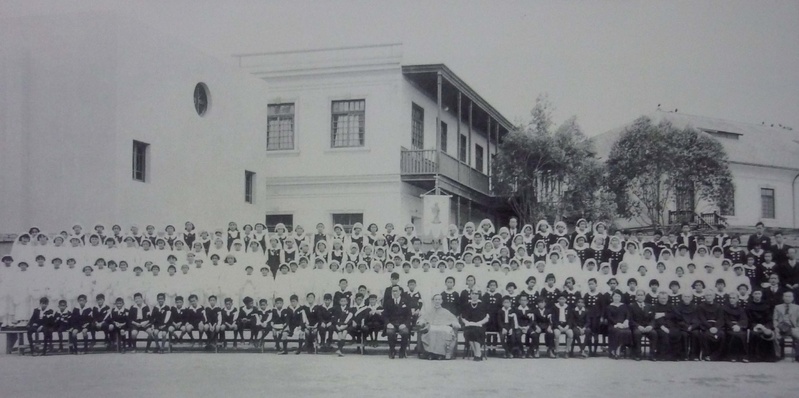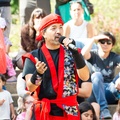Lima Nikko was the first official Japanese school in Peru and Latin America founded in 1920. In total, 21 classes have graduated from its classrooms, completing primary education under Japanese principles and values. Although it closed 76 years ago due to the Second World War, its memory is still valid. Its alumni association, “Association of Alumni of the former Lima Nikko Japanese School” still continues to meet and organize activities for its members. All of them are over 80 years old.
How was the school born?
By 1920, there were a total of 26,000 Japanese living in Peru. They came to work as farm laborers. But over time, they progressed and many were able to become independent and open their own businesses. They formed families and now education became one of their new priorities. The first Nisei were born.
The parents wanted their children to have a Japanese education, hoping to one day return to Japan. Some studied in local schools and others, with greater luck, were sent to study in Japan. The options were not many.
When the Central Japanese Society was founded in Lima in 1917, one of its priorities on the agenda was the creation of a Japanese school. An organizing committee was formed and they took up a collection to build a small school. They far exceeded expectations and managed to raise a significant fund, including requesting teachers from Japan through the Consulate.
Professors Goro Yokose (24 years old) and his wife Haruko (21) were chosen to run the first official Japanese school in Peru. They were hired for a period of 5 years with a monthly salary of 100 soles for the teacher and 60 soles for the teacher. The contract included boat tickets to Peru and an advance of 2 months' salary.
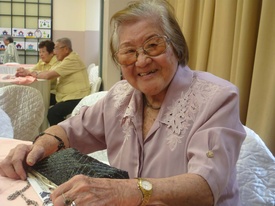
On November 18, 1920, Lima Nihonjin Shogakko or Lima Nikko was inaugurated in the premises of the Central Japanese Society (SCJ), located at Jr. Junín 719 in Barrios Altos. The Consul of Japan, the leaders of the SCJ as well as parents attended the opening ceremony. They sang the Kimigayo (Japan's anthem), the Lima Nikko anthem (which was created by Professor Yokose) and read the Imperial Edict of Education or Kyouiku Chokugo.
Three days later, on November 21, 1920, classes began. The premises were located at Calle Sagástegui 639, in block 6 of Av. Abancay. On that date, the school had 23 students (10 boys and 13 girls, between 5-6 years old and those over 10) as well as 3 teachers: the Yokose couple and a Peruvian teacher.
Although the initial funds to build the school exceeded initial expectations, they were not enough to cover all expenses. The Yokose teachers were forced not only to fulfill their duties as principal and teacher; but also cleaning (because it was not enough to hire additional staff); cleaning ceilings and walls, scrubbing floors, among others.
The following year (1921), the number of children practically doubled and there were now more than 60 students, so they moved to larger premises. Lima Nikko was now located at 630 Zamudio Street, on the second floor. Two Peruvian teachers joined the teaching staff: Carmen Salaverry and Amelia Mesinas.
By 1927, the school's prestige had grown. Lima Nikko acquired a land of more than 30,000 m², where they moved permanently. It was located on Av. Mariátegui in the Jesús María district. It had classrooms, a sports field, a dining room, services and even an assembly hall.
In 1932, Lima Nikko obtained official recognition and authorization from the Ministry of Education of Japan. By 1941, Lima Nikko already had 1,600 students and more than 70 teachers, including Peruvians and Japanese. When World War II broke out that same year, Peruvian President Manuel Prado Ugarteche decreed the closure and expropriation of the Lima Nikko location. Currently, the Great Teresa Gonzáles de Fanning Women's School Unit operates on the land.
Memories of Lima Nikko
At the beginning, not everything was easy, even for the students. Many of them had been studying in the local public schools and did not know Japanese, so they could not communicate with their teachers who barely spoke Spanish. With patience and tolerance, director Yokose knew how to move forward.
Among their memories, several former students first mention the school cafeteria ( Shokudoo ), where for 25 cents they enjoyed a balanced lunch.
This memory was recorded in the book Diamond Weddings by Lima Nikko, published in 1995: “(…) in the dining room the students had lunch in shifts of 400 at a time and the menu, which varied each day of the week, consisted of soup, stew with rice, fruit, bread and tea, at a cost of 25 cents, and the second can be repeated according to each person's appetite (…)”.
Lima Nikko also had an Assembly Hall ( Koodoo ), which had a magnificent structure. It was built in special adobe, without columns supporting the roof or metal structure, built according to the advanced Japanese construction system of that time.
It had capacity for 1,000 people and the school's official events, exhibitions, artistic and cultural evenings, film screenings, indoor sports competitions, kendo and judo exhibitions, among others, were held there.
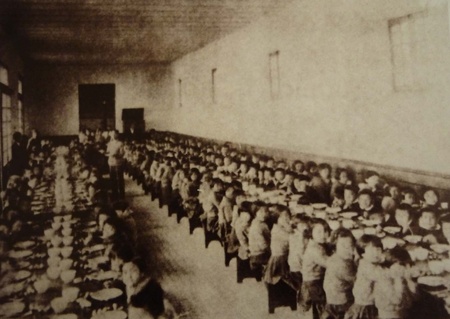
Margarita Yamamoto, belonging to the XXI class, along with other Lima Nikko alumni, remembers one of the most difficult exams they had to pass: “We had to write it from memory, with the same kanji that appeared in the original and that are no longer known.” they use. I remember that only one could pass the exam. It was Julio Mitsui."
They had to memorize the “Imperial Rescript on Education of His Majesty, Emperor Meiji,” which contained 315 characters in total, including archaic kanji that were used before the war.
For example, at the beginning of the rescript it says:
朕惟フニ (chin omou ni)
which currently is formulated:
私は思う (watakushi wa omou)
to express the phrase: "I think."
The rescript was published in 1890 under the name of Emperor Meiji and describes the basic ideas for education. It was distributed to all Japanese schools, even those located overseas, such as the remembered Lima Nikko Japanese School. The students had to memorize it and venerate it, along with the portrait of the Emperor, between the years 1890 to 1948. It was annulled in 1948, after Japan's surrender in World War II. It contains a clear nationalist thought, but it also highlights values towards our parents, siblings, friends and in general.

Lima Nikko today
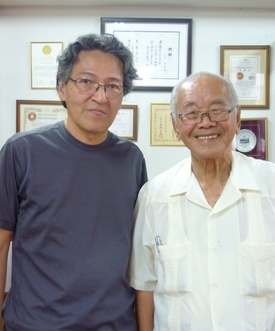
Enrique Yamaguchi is the recently re-elected institutional president for the 2018-2019 period and is a representative of the XVII class. On behalf of all his doukyuusei (classmates), he revealed to us the reality and future of Lima Nikko, which in 2018 will celebrate 45 years as an alumni association.
Of the 1,800 students that Lima Nikko had from its foundation in 1920 until its closure in 1942, due to the war, its survivors barely exceed a hundred. According to Yamaguchi, survivors represent only 10% today. This percentage is reduced even further if we consider only the active members of the institution. According to Yamaguchi, age is a decisive factor. He himself is already 88 years old: "As you see, we are all old people, where the youngest is 85 years old."
The health problems and dependence on mobility that affect some of its members reduce participation in the meetings, either partially (they only attend certain meetings, such as the Shinnenkai, which they attend accompanied by their families) or completely. (no attendance). Those who still participate regularly are the members of the board of directors (belonging to promotions 17, 20 and 21) and some representatives of the promotions that still survive, such as promotions 1 to 9, represented only by Satoyo Horiuchi, who currently surpasses 90 years of age).

The atmosphere of camaraderie and friendship from school times endures, as can be seen in the meetings held monthly on Sundays at the facilities of the Peruvian Japanese Association (APJ). Here they meet again and spend a pleasant afternoon, especially the members who are over 90 years old and attend the meetings without fail. While they talk, they enjoy a homemade lunch.
But realistically, Enrique Yamaguchi predicts that Lima Nikko will not continue for long. Due to the age of its current members, it is considered that Lima Nikko as an association will exist only until 2021, when the 100th anniversary of the founding of the former school will be completed. "We will close the page," he concludes.
But more than closing a page it would be, rather, like a step aside, so that the other Nikkei institutions in Peru continue with the example of life that they learned from the Issei, through their memory and the values learned in “ gakko.” " (school).
Lima Nikko Board of Directors (2018-2019 Period)
President: Enrique Yamaguchi
Vice President: Oscar Takuma
Secretary: Margarita Yamamoto
Recording Secretary: Eloísa Tanaka
Treasurer: Victor Makino
Vocal: Carmen Miyamoto
Prosecutor: Consuelo Momiy

SOURCES:
ASSOCIATION OF ALUMNI OF THE LIMA NIKKO JAPANESE EX-SCHOOL. Diamond weddings. 1920-1995. Lime. nineteen ninety five.
MATSUDA, Samuel (editor). Walking for 75 years on the roads of Peru. Japanese immigration (1899-1974). Translated from the original Japanese into Spanish by Carmen Chieko de Noguchi. Lima: Kotoba Books. 2014.
Jiritsu Blog
Special thanks to Mr. Enrique Yamaguchi (President of Lima Nikko) for allowing the dissemination of the photos from the Diamond Wedding book .
*Article adapted for Discover Nikkei and originally published as a journalistic article for the Peru Shimpo newspaper on January 17, 2018.
© 2018 Milagros Tsukayama Shinzato


